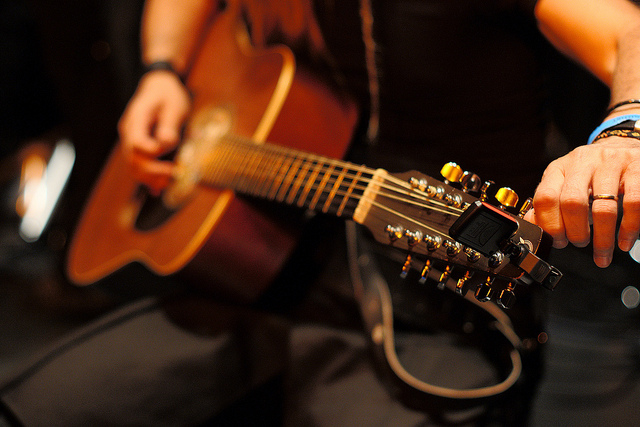The great thing about learning to play the guitar is the simplicity of the hobby. You won’t need to fill your home with different little gadgets – it is enough to just buy a guitar and get playing.
Even though the hobby is relatively gadget-free, you should learn how to use one little machine: a metronome. This gadget used to look like a pendulum that went tick-tick-tick, but now metronomes are mainly electronic boxes providing you with a beat.
But how do you use a metronome?
Helps You Stick to the Beat
The great thing about using a metronome is how it helps you stay on the beat and play in time. Staying in time is essential for guitar playing, so you should definitely add a metronome to your guitar lessons right from the get go.
Where to Find A Metronome?
Thanks to the Internet, you can now find a metronome online. The online metronomes work just as well as real metronome boxes. On top of this, you can also download different metronome apps to your smartphone.
You can naturally go with a real metronome as well. Music stores sell both the traditional pendulum-like metronomes, as well as the more modern, electronic versions.
Understand Time Signatures
Before you start using a metronome as part of your practice sessions, it is important to understand the concept of time signatures. Time signature tells you the number of beats in a specific rhythm, helping you play the chords in the right tempo.
If you are looking at sheet music or even tabs, the time signature of the song is often announced at the start of the song. The most common time signature is 4/4. You might also see time signatures such as ¾, 9/8 and 5/4.
With electronic metronomes, you just need to know the song’s time signature and set it up in the programme. It will then start providing you the beat with little clicks in your required tempo.
Match the Chord with the Click
You should start with a common time signature such as 4/4. Match a specific chord with the click sound. As you develop, try changing your chords and keep up with the tempo. You can continue moving on to tougher time signatures and increasing the speed you strum the chords. This is a great way to improve your playing speed and it is a great way to warm up your fingers before a playing session.
Make sure you practice basic chords and chord progression with a metronome, but also make it part of your song practice. It’s a great way to measure how your skills are improving.
Don’t Use It Constantly
Even though a metronome is an essential part of guitar practice sessions, you shouldn’t always play with the metronome on. Try to ensure you focus also on your technique instead of just practising the speed with which you play the guitar.
If you find a specific technique difficult, it may help to turn off the metronome and just slowing down the tempo. Once you master the technique, you can test yourself by playing the same thing with the metronome.
As with all guitar practice, mixing and matching different learning styles often gives you the best results!


